The OptiPlex ricing guide feat. OptiFlex V1
It took me well over a year of experimenting with various setups to finally decide that it's worth writing a guide for people that might be interested in similiar SFF builds. But I think that giving credit where it's due is very important - so I'll start from the beginning. It's a short article where I mention various PC's that will probably be described separately in the future.
The overpowered laptop that couldn't
Last year I was trying to play one of my all time favourite games - Gothic 1. At the time all I had in terms of computers was a gaming laptop - MSI GP76 Leopard 11UH-667PL. A beast that easily maxed out every game in my library but with nonexistent battery life.
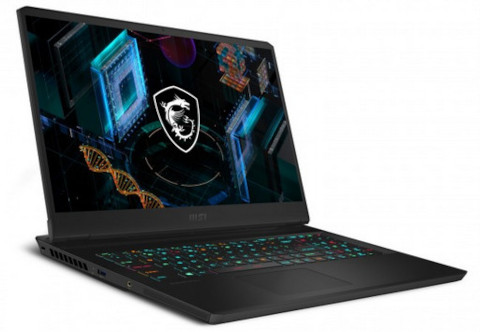
Because it's obviously a new laptop, to my disgust I had to run Windows 10 / 11 there. If I didn't game or I wouldn't care about old games I'd use Linux. Of course there is Proton, Wine etc but my game library spans across the Windows XP era mostly. A lot of my games either require abyssal hacks to work under Linux or straight up don't work at all. That's why I'm stuck with Windows for gaming. Now this laptop for some reason didn't like Gothic 1 at all. I was unable to get Gothic running under any circumstances. I tried the Steam version, I tried patching the retail version with community patches and I also tried running retail without any patches. No luck. Always a crash after starting the game.
My hatred for that laptop (and Windows 10 in general) was pretty much at it's peak back then. I decided that I'll build myself a budget PC for Windows XP / 7 to play older games. However I had literally zero experience in building PC's whatsoever. Best I could do is replace a SSD / HDD drive in a PC.
I originally consulted my dad because he has been in IT for his whole life and the number of PCs he has built probably extends the total number of diapers I managed to fill as a baby. My main requirements for this PC were as follows:
- Small form factor
- Max 100$ (Not counting the GPU)
- Had to have official Windows XP support
- Had to have enough space for a low profile graphics card
- Had to be able to run my old games smoothly
The main games I wanted to play on the PC:
- Old C&C Games (Red Alert series, Generals, Renegade)
- Gothic 1 & 2
- TES Morrowind
- Old NFS (SE, High Stakes, Hot Pursuit 1 & 2, Most Wanted)
- Midnight Club 2
- GTA III / Vice City / San Andreas
- Call of Duty 1 & 2
- Croc 1 & 2
- Dark Messiah of Might & Magic
- Driver: You are the Wheelman
- Painkiller / BOOH / Overdose
There would be bonus points if the following games were somewhat playable:
- Fallout 3 / New Vegas
- TES Oblivion
- F.E.A.R.
- Crysis
At that time we found out that it's probably the best to get a third gen intel CPU due to the vast support for Windows XP in terms of manufacturers drivers. We didn't want a "period correct" retro PC but something that's as strong as it gets but is still able to run Windows XP natively.
We also decided to focus on the first part of the game list and leave the more demanding games for a different, Windows 7 PC build. My dad found a low profile GPU and bought it for around 40$. It's a Zotac GeForce 730 GT with 2 GB DDR3 VRAM and a passive cooling system.

Is it a good GPU in 2023? One could say of course not. But for the games I care about it's more than enough.
After searching on my own I decided to check YouTube for people trying to do similiar stuff. And oh boy did I find the holy grail of SFF retro gaming PC's - PhilsComputerLab.1
The Chad 8200 SFF
Skipping the details - Phil got me acting unwise on that HP 8200 SFF PC. Just look at it. It's sexy. And if you don't think alike then get out of my face.
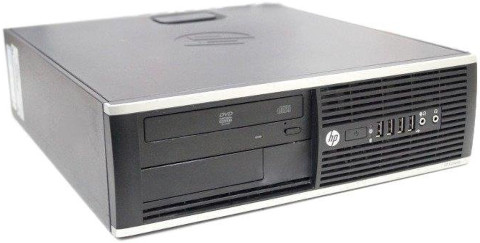
I bought one in great condition for mere 40$. The specs were as follows:
| Part | Model |
|---|---|
| CPU | Intel i5-2400 @ 3.10 GHz |
| RAM | 8GB DDR3 1333 MHz |
| HDD | 240 GB HDD |
For GPU I used that Zotac GT 730. As for storage, I always pretty much throw away any storage I get from used PC's. It's mostly pretty low capacity and I don't trust used storage at all with my files. I had an unused 1 TB Seagate HDD laying around anyway so I used that. 1 TB seems like a standard drive nowadays, but the great thing about the gaming in Windows XP era is that games were pretty small compared to the ginormous games we have today.
All in all I spent around 80$ for this PC + GPU.
Is this the best endgame Windows XP gaming machine? Far from it. But for my use case? More than enough. This computer easily eats every Windows 98 / Windows XP game that I can't run on Windows 7 / 10.
Now for my use case this PC is enough. If you want to play older Windows XP games you're all set. However I really love maxing out PC's and customizing them.
Let's leave the Windows XP use case and try to think about a different scenario. We have this PC and we want to update it to it's limit. No matter whether we're going to run Linux or Windows XP / 7 / 10.
We want to make it as strong as we can. Now here comes the problem though - options for upgrades.
Upgrading the HP 8200 SFF
Phil covered this extensively in this2 video as well as this3 one.
Apart from upping the RAM, and switching the CPU for the i7-2600 you're pretty much handicapped. Let's see this in a table:
| Part | Max upgrade option |
|---|---|
| Motherboard | Not upgradeable - proprietary size / mounting holes / io shield |
| CPU | Intel i7-2600K [^4] on paper |
| CPU Cooling | Not upgradeable - proprietary mounting holes |
| Fans | 1x 92mm fan only for CPU Cooling, not all manufacturers fit |
| RAM | 4 slots, Max 16 GB Non-ECC DDR3 PC3-10600 (1333 MHz) [^5] |
| PSU | Not upgradeable - proprietary shape / mounting |
| GPU | Upgradeable - Low Profile GPU's fit |
| Storage | 1x 3,5" HDD under the PSU, enough space for more 2,5" SSDs |
| Front Bays | 1x 3,5", 1x 5,25" |
And that's it. The motherboard is proprietary. This means that not only you cannot fit a custom board into the 8200 SFF chassis. You'll also have trouble mounting the 8200 SFF's motherboard into any other case. The PSU is proprietary as well. This isn't bad entirely though. Due to the design choices the cable management is pretty good. That's what you mostly get with the proprietary business SFF PC's.
There is one interesting thing that I suspect Phil missed in his videos. He recommended Arctic fans for replacing the CPU fan. I have nothing against them, I use Arctics a lot.
However I'm a gigantic Noctua slut and I'll stick a noctua in E V E R Y single place I can. And I can't do that here. The 92mm fan is incompatible with the HP 8200 CPU cooling duct / tunnel. You can mount the first part that rests against the front of the case but the second part won't fit over the fan. That's a minor thing but it annoys. I also tried the low profile 92mm - it's too thin, it has to be a standard thickness fan.
So if you wanted to have the best possible setup here - you would upgrade the RAM to 16 GB and get an i7-2600. In theory the chipset supports i7-2600K however I have no idea how long would you be able to prevent a meltdown with the tiny CPU cooling you're forced to use.
I was searching far and wide for a proprietary SFF PC that allows me more freedom - and it's hard. Most of them have all kinds of proprietary abominations that prevent you from changing the motherboard, CPU cooling or front panels. However in the realm of proprietary madness I think I've found a Holy Grail.
Don't get me wrong though - this is specifically for people that enjoy building sleeper PC's in business SFF cases. It's not r/sffpc where you either have an after market case or build one on your own.
Our main goal here is - we want to buy Joe's office PC, gut it out and make an overpowered sleeper without too much dremel.
Let me present you the Dell OptiPlex family.
OptiPlex master race

The Dell OptiPlex family is pretty big. You have all sizes from tiny to towers but we're going to focus on DT - Desktop Tower. It's slightly bigger than the previously mentioned HP 8200. It's the same thickness in terms of CPU Cooling possibilities though. Because of the fact that DT is bigger - you get slightly more space for things. You also don't have pivoting drive cages because there's enough space for them to be a static part of the case.
It's worth explaining the naming conventions for OptiPlexes.
The OptiPlex names
Here's a basic guide to the naming of OptiPlexes:
Dell Optiplex [X][X][X][X]
- First X - Grade - the lower it is, technically the lower quality the equipment is, this is important.
- Second X - Laptop reserved, ignore.
- Third X - Generation - Intel Gen, this is important.
- Fourth X - Laptop reserved, ignore.
Examples:
| Variant | Intel Gen |
|---|---|
| Dell Optiplex 3010 DT | 2nd - 3rd |
| Dell Optiplex 7040 DT | 4th |
| Dell Optiplex 9080 SFF | 8th |
In terms of the first digit, the grade, consider this example:
| Variant | Front panel | RAM slots | Max RAM | CPU | Chipset |
|---|---|---|---|---|---|
| 3010 DT | 2x USB 2.0, Audio Jacks | 2 | 8 GB | i3 / i5 | H61 |
| 7010 DT | 2x USB 2.0, 2x USB 3.0, Audio Jacks | 4 | 32 GB | i3 / i5 /i7 | Q77 |
We're focusing on the XX10 series because they're the last to have official Windows XP support. That's to keep the vibe of retro Windows XP gaming machine.
If you're planning to buy an Optiplex AS IS and use it for retro gaming - you should pretty much just choose between 3010, 7010 and 9010. The RAM shouldn't be too important because for Windows XP gaming you won't need more than 4 GB.
However if you're going to mod this PC then in my opinion you should specifically get the 3010 DT and I'll explain why in flying colours.
Now let's quickly compare the HP 8200 SFF to the OptiPlex 3010 DT.
Differences between the HP 8200 and Dell OptiPlex 3010 DT
Please take this table with a grain of salt - those two are not equal. It would make more sense to compare the 3010 DT with an HP 8300 SFF rather than 8200 due to the chipset / supported intel generation differences.
You can replace the specifications of 8200 with 8300 but in my opinion Dell still wins due to the motherboard / PSU options.
| Part | HP 8200 SFF (HP) | Dell Optiplex 3010 DT (DELL) | Who wins? | Notes |
|---|---|---|---|---|
| Motherboard | Proprietary | Micro ATX | DELL | - |
| CPU | Intel i7-2600K | Intel i7-3770K / Any [See notes] | DELL | Any CPU if you switch the motherboard to your liking |
| CPU Cooling | Proprietary | Proprietary [See notes] | Tie / DELL | If you switch the motherboard, any cooling low enough to fit in the case works |
| Fans | 1x 92mm CPU [See notes] | 1x 80mm Chassis, 1x 80mm CPU | DELL | Not all fans will fit! Arctic does, Noctua doesn't. |
| RAM | 4 Slots, 16 GB Non-ECC DDR3 1333 MHz | 2 Slots, 8 GB Non-ECC DDR3 1333 / 1600 MHz [See notes] | HP | On paper this DELL supports 8 GB, but users report that they use 16 GB without problems. HP wins due to official support of 16 GB. |
| PSU | Proprietary | TFX | DELL | - |
| GPU | None, LP GPUs fit | None, LP GPUs fit | Tie | - |
| Storage | 1x Proprietary under PSU mount, space for a loose 2,5" | 1x Combo drive caddy with 3,5" and 2,5" mounts | Tie | This doesn't count the external bays. |
| External Bays | 1x 3,5", 1x 5,25" | 1x 5,25" | HP | - |
8200 wins in terms of ram, drive bays and storage mounting options however in terms of endgame sleeper customization it's pretty much done because you can't change the motherboard and PSU. Even if we don't consider mad modding but normal usage - if your PSU dies - you have to find an exact replacement. The same happens with your motherboard - you can't put any other mobo than the one specifically designed for the HP 8200 SFF.
As for the comparison - originally I wanted to make a point summary. However it would be unfair for the reason I outlined before - it would be better to compare 8300 here. So the summary will be simpler:
- If you want a PC for Windows XP gaming that just works - get either the HP 8200 SFF or Dell OptiPlex 3010 DT.
- If you plan to upgrade it way before the original specs - Dell OptiPlex 3010.
Below I present the pros and cons of each of those PC's in a a nutshell.
HP 8200 SFF
Pros
- Smaller (Takes a little less space)
- Easier to route cables (especially SATA)
- External 5,25" bay
- External 3,5" bay
Cons
- Proprietary way of mounting the main 3,5" HDD under the PSU.
- Proprietary PSU - you won't upgrade it.
- Proprietary motherboard - you won't upgrade / reuse it.
- Proprietary CPU cooling - you won't upgrade / reuse it.
- CPU Wind Tunnel doesn't fit all 92mm fans - Arctic's work, Noctua's don't.
- Due to the motherboard, your best CPU on paper is i7-2600K.
- Due to the motherboard, your max RAM option is 16 GB DDR3 1333 MHz.
Dell Optiplex 3010 DT
Pros
- Standard TFX PSU - any other after market TFX will fit.
- Standard 8x Micro ATX mounting holes - using bigger screws though - seems like PSU mounting screws. Not a problem.
- Due to the motherboard upgrade, you can slap in any CPU you want.
- Due to the motherboard upgrade, you can use any cooling you want.
- Due to the motherboard upgrade , you can use any RAM you want.
- External 5, 25" bay
Cons
- A bit harder in terms of cable management.
- Proprietary button and power / hdd leds - if changing motherboard, you'll have to improvise.
- Proprietary front panel LED connector.
- No external 3,5" bay
Why Dell OptiPlex 3010 DT specifically?
Because it has the least amount of proprietary shit. Because we're now past the point of just using the PC and we want to mod it, we don't want to end up in a place where we can't connect our components because of proprietary solutions.
CPU fan connector
In 3010 DT there is a standard 4-pin fan connector we all know and love. However I didn't know about this and I bought a 7010 DT because I thought that a higher number means better.
To my sad surprise, when I wanted to replace the CPU fan I saw this:

Thankfully you can get a cheap adapter on Amazon / Ebay but it's still a hassle specifically made to annoy you and make servicing a nightmare.
Front panel
You may think the front panel on 7010 / 9010 DT is better because it has 2x USB 2.0 and 2x USB 3.0 ports and 3010 DT has only 2x USB 2.0 ports.
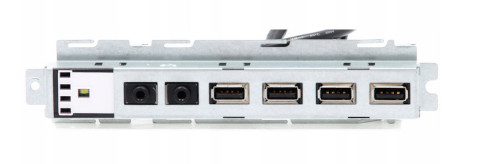
In theory yes but good luck connecting a combo 2x USB 2.0 and HD Audio connector to your custom motherboard if you have the 7010 / 9010 DT front panel:
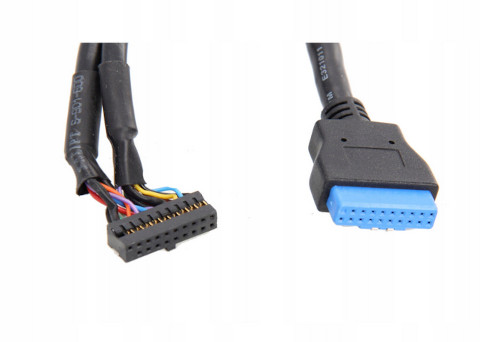
But wait, the 3010 DT has standard USB 2.0 and separate HD Audio connectors...
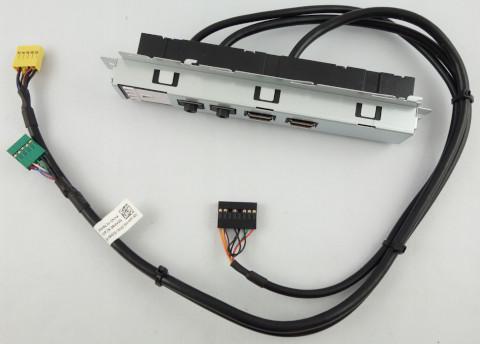
The spooky proprietary cable on the right is actually a combo connector for all the LED's. We can live without them.
Those are the reasons why you should get a 3010 DT. If you got a 7010 / 9010 DT accidentally like me - there is still hope.
Just buy a 3010 DT front panel. It fits without problems. You'll have 2 empty USB holes though in the plastic cover. If that bothers you, you can buy a 3010 DT front plastic cover and replace the one you have.
All in all the 3010 / 7010 / 9010 DT cases are pretty much interchangeable.
The Optiflex V1
Read this part only if you're interested in making a stupid meme PC. Or if you're curious. I'll show you a step by step history of my first OptiFlex. I'm working on a new reincarnation soon, but that will be it's own article.
Let's dive into it.
I bought a used Dell Optiplex 7010 DT because I didn't know about the differences in fan connectors and front panels at that time.
I had to take it apart not only because I'm replacing the motherboard but also because it was disgustingly dirty. The guy who I bought it from said that it's thoroughly cleaned and renovated.
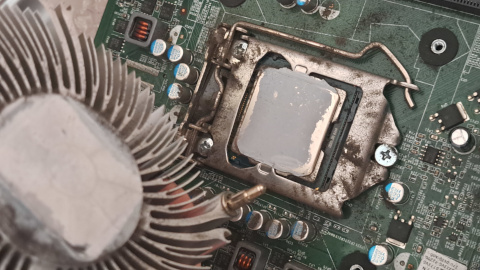
Not really.
The outside was looking pretty fine minus a slight dent in the back part of the case. Turned out the dent was hard enough to displace the PSU horizontally...
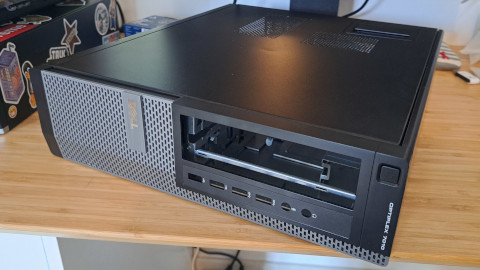
The inside has a lot of space but if you're connecting a 3,5" HDD and an optical drive then it's gonna be claustrophobic due to all the cables.
Note the drive cage on the left - you mount a 3,5" on the top. On the bottom side you can mount a 2,5" SSD. On the right you have a standard 5,25" external bay at the top. However on the bottom there's a proprietary front panel bay - you won't stick anything else than a 3010 / 7010 / 9010 DT front panel there.

Now here's what's going inside the case. We're replacing the stock 240 W PSU with a 300 W TFX Gold. We're also making this a Windows 7 gaming machine with a Maximus V Gene running the Intel i7-6700K. And with 32 GB of DDR4 memory.
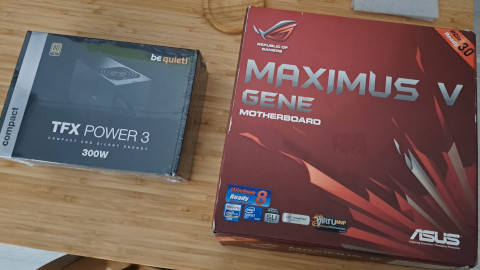
The PSU that I had was a beQuiet! TFX Power 3 (300 W). A great PSU but in hindsight there was one dealbreaker - stiff main cable. Get a 300W Chieftec TFX, it doesn't have a sleeve so it's easier to bend for cable management. The secondary CPU power cable is slightly longer there as well. As you can see, an after market TFX easily fits in the optiplex. You won't have that with the HP 8200 SFF.
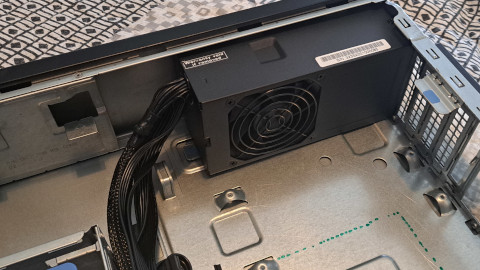
There's one more thing concerning the PSU's in this case. You might consider leaving the stock PSU if it's not making any weird noises for one good reason. Even though it's a TFX PSU it has cable lengths specifically designed for this case.
This means that the main power cable is short and the additional CPU power cable is long enough to go all around the motherboard as you can see below:
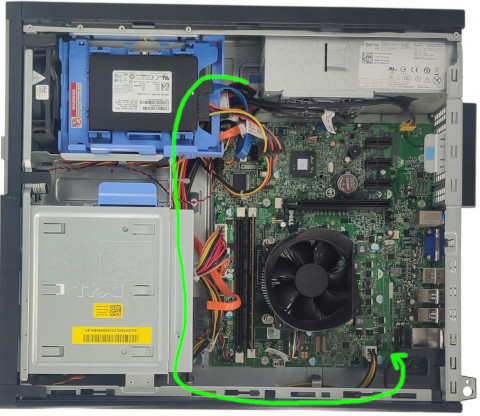
This is actually neat because you might have problems with standard shorter TFX CPU power cables once you add a custom CPU cooling and a GPU inside.
As for mounting the new motherboard - it was a breeze. You just have to note that this case actually uses the PSU screws for mounting the motherboard as opposed to standard screws. Check the difference on the picture below:

As mentioned before, the new motherboard fits without problems - you can't do that in the HP 8200 SFF either. Notice how I swapped PSU's though - this is the 300 W Chieftec I mentioned briefly. I swapped because Chieftec has no rigid sleeve on the main power cable. The CPU power cable is also a bit longer so it's not strained that much.

Here's a problem I didn't notice before - the power button has a proprietary connector. Of course.
It's a single cable for the power button and for power led. Since I don't want to try my luck soldering / desoldering and burning my house down I decided to replace the power button.
I bought a pack of 2 cheap generic buttons for bitcoin miners - they have a pretty long cable which is important here.
Another problem - the button is smaller so it won't stay in the case like the original one did. The moving part is also longer than in the stock button.
But we all know that easiest solutions are the best - I just hot glued it into place.
And of course it turned out to be glued too deep into the case so clicking the front panel button did nothing. Thankfully I managed to... drive a screw from the inside into the front panel button which extended it's length enough to register the click.
I wish I have taken a picture of this hack because it was a serious redneck engineering moment. But it worked and made a metallic click sound so yay!
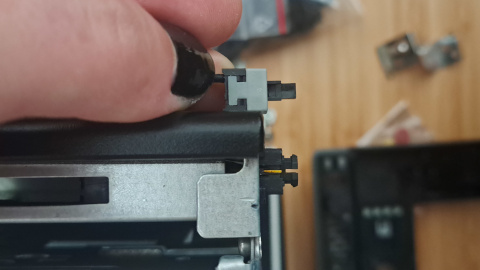
I think it's time to talk about CPU cooling.

Enough said.
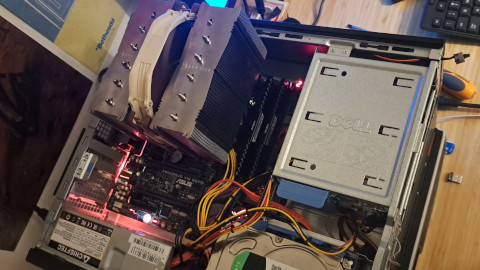
Everything works nicely. We don't talk about cable management here.
If you wanna stay in the low profile GPU territory - a nice option is a Gigabyte / Asus GeForce GTX 1650 4GB DDR5.
If you're up for tearing out the PCI-E retainers on the rear of the case, you can slap a full size GPU granted it won't be long enough to stick into the cables / drive cage.
Obviously you won't ever put on the side panel this way - but we already have a D15 so I think that's logical.
By the way I highly recommend the AABCooling fans for their "RGB". If you want to have Cherenkov's radiation in your room, they're the way to go.
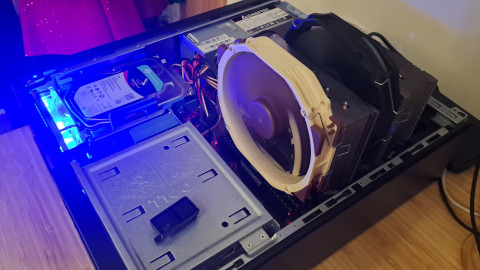
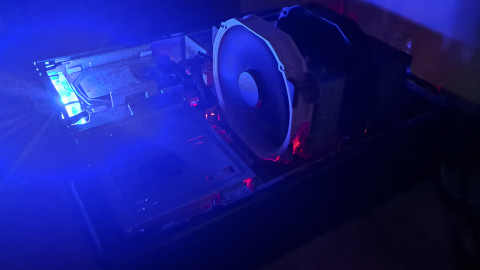
The summary
I think that the pros of Dell Optiplex 3010 DT outweigh it's cons. The trickiest thing is getting a new power button in granted you're replacing the Dell motherboard with your own. Obviously having a huge ass D15 stick out of the case kinda breaks the whole point of a SFF / DT case that can sit on it's side or have a monitor resting on top of it.
If you're more of a sane PC builder then you don't have to get a D15. Obviously 6700K is a little hot but if you took a lower tier CPU or even newer gen but with a low TDP rating then you could easily use one of those and keep the PC closed shut:
- Noctua NH-L9i
- Noctua NH-L9x65
- Noctua NH-L12S - I think it should fit, it's unconfirmed at the moment.
As for V2? I bought a 3010 DT in a good condition. I'm planning to go with a 1700 socket and make it my main PC. I'll go with Noctua for the cooling obviously, unsure which one though.
This time it will be a proper closed sleeper build.
If you made it this far, thanks for reading!
2 Upgrade HP Elite 8200 GTX 1050 RAM CPU SSD to its limit for Games
3 Improve your HP Elite Small Form Factor PC
4 This is according to: Intel Q67 Express Chipset Phil mentioned that in this case an i7-2600 is max and I wouldn't be surprised. The stock cooling probably won't do with i7-2600K.
5 According to "Illustrated Parts & Service Map - 8200 Elite Series Convertible Small Form Factor (c02741915).pdf"
